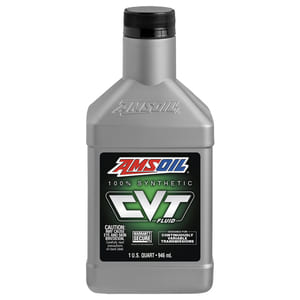Modern car enthusiasts are always keen on understanding the intricacies of their vehicles. One topic often up for discussion is transmission systems, specifically continuously variable transmissions (CVTs). If you’ve ever driven a golf cart or a go-kart, you’re familiar with the effortless feel of instant acceleration without gear shifting. This is how CVTs operate in cars today, offering a smooth and efficient driving experience.
What Are CVTs?

A continuously variable transmission (CVT) is a type of automatic transmission that, unlike traditional gear-based systems, uses a belt or chain running between two pulleys to provide seamless acceleration. Think of it like a golf cart or go-kart, where you press the gas pedal and get immediate speed without manual gear changes or interruptions in torque.
Key Features:
Instant acceleration: No delay in power delivery.
No manual gear shifting: Smooth transition between speeds.
Constant torque: Effortless driving experience.
How CVTs Work
The magic behind a CVT lies in its ability to offer an infinite number of gear ratios between a minimum and maximum value. This is achieved through variators connected to the drive and driven pulleys.
Variators Explained:
Drive Pulley (Primary Pulley): Transmits power from the engine.
Driven Pulley (Secondary Pulley): Sends power to the wheels.
Belt or Chain: Links the drive and driven pulleys.
When you accelerate, the variators adjust the diameter of the drive pulley, increasing the belt’s tension and changing the effective gear ratio. This results in a seamless transition from low to high gear, maximizing torque and efficiency.
Torque Multiplication Process:
Low Gear: Drive pulley diameter is small, driven pulley diameter is large, resulting in high torque.
High Gear: Drive pulley diameter increases, driven pulley diameter decreases, allowing for higher speeds but lower torque.
The CVT system continuously adjusts to find the optimal gear ratio for current driving conditions.
Components of a CVT
To better understand how a CVT functions, let’s look at its main components:
Drive Pulley: Engages with the engine to start power transmission.
Driven Pulley: Connects to the wheels, receiving power.
Belt or Chain: Transfers the motion between pulleys.
Variators: Adjust the pulleys to change gear ratios.
CVT in Action
Watching a CVT in action reveals how smooth and efficient this transmission type can be. The variators constantly move back and forth, adjusting the belt’s position and changing the gear ratio seamlessly.
Steps in Action:
Initial Acceleration: Drive pulley is small, driven pulley is large—maximizing torque.
Increasing Speed: Drive pulley changes diameter, reducing torque but increasing speed.
High Speed: Driven pulley is small, drive pulley is large—optimizing for speed.
Inside a CVT
Taking apart a CVT reveals the complexity and robustness of its design. The belt, variators, and pulleys work in unison, under significant tension and pressure.
Key Parts Inside:
Belt: Made of steel for durability and strength.
Variators: Critical for adjusting the gear ratios.
Pulleys: Essential for transmitting power.
The belt travels up and down the variators, moving the CVT through its infinite range of gear ratios.

Differences from Traditional Transmissions
The operation of a CVT is different from conventional automatic transmissions, which use a fixed number of gears and a dry clutch system.
Key Differences:
Dry Clutch vs. Fluid-Immersed System: Traditional transmissions often use a dry clutch, whereas most CVTs are immersed in a special fluid.
Fluid’s Role: In a CVT, the fluid reduces friction, provides necessary cushioning, and ensures proper operation.
CVT Fluid Characteristics
The fluid used in a CVT is crucial to its performance. With steel-on-steel contact between the belt and variators, the fluid must provide a delicate balance between grip and slip prevention.
Key Requirements:
Cushioning: To reduce wear and tear.
Film Strength: Ensures the components don’t grind.
Grip: Prevents the belt from slipping.
Importance of Correct Fluid
Using the wrong fluid can drastically shorten the life of a CVT. Incorrect fluid can lead to excessive wear, reduced performance, and ultimately, transmission failure.
Consequences:
Increased Wear: Belt and variator damage.
Performance Loss: Reduced efficiency.
Noise: More audible operation due to wear and tear.
CVT Wear and Tear
Over time, CVTs can exhibit wear, especially if not properly maintained. For instance, Nissan*’s CVTs have shown belt and variator wear when not using the correct fluid.
Common Issues:
Belt Damage: Visible wear and tear.
Variator Grooves: Grooves similar to a record, causing noise.
AMSOIL 100% Synthetic CVT Fluid Benefits
AMSOIL 100% Synthetic CVT Fluid is designed with durability in mind. Tested under harsh conditions, it ensures longevity and problem-free driving.
Benefits:
Longevity: Designed for extensive use.
Efficiency: Maintains performance.
Protection: Reduces wear and tear.
CVT Maintenance
CVTs require specific maintenance schedules, especially regarding fluid changes. Using the correct CVT fluid extends the transmission’s life and maintains performance.
Tips:
Regular Inspections: Check fluid levels and condition.
Correct Fluid: Always use manufacturer-recommended fluid.
Scheduled Changes: Adhere to recommended intervals.
Finding the Right CVT Fluid
Ensuring you use the correct CVT fluid is essential. AMSOIL offers a range of products tailored to meet and exceed vehicle needs. For peace of mind, head over to amsoil.com.
Types of Vehicles with CVTs
Many modern vehicles are equipped with CVTs due to their efficiency and smooth performance.
Common Makes/Models:
Nissan*: Altima*, Maxima*
Toyota*: Corolla*, Prius*
Subaru*: Outback*, Forester*
Honda*: Accord*, Civic*
Advantages of CVTs
CVTs offer numerous benefits for drivers seeking a smooth and efficient ride.
Key Advantages:
Smooth Acceleration: No shift shock.
Fuel Efficiency: Optimized power delivery.
Simplified Driving: Less manual intervention.
Common CVT Issues
Despite their benefits, CVTs can face issues if not properly maintained.
Potential Problems:
Slipping Belts: Often due to wrong fluid.
Noisy Operation: Indicates wear.
Jerky Movements: Poor fluid quality or wear.
Future of CVT Technology
Technology is always advancing, and CVTs are no exception. Manufacturers are working on improving efficiency and performance.
Emerging Trends:
Enhanced Durability: New materials and designs.
Better Fluid Formulations: Higher performance and protection.
Integration with Hybrids: Greater efficiency and smoother operation.
CVT Myths and Facts
There are several myths surrounding CVTs, often due to misinformation.
Common Myths:
Fact: With proper maintenance, CVTs are as durable as traditional transmissions.
Fact: Modern CVTs are designed to handle various power levels.
CVT Performance in Different Driving Conditions
CVTs perform well across various driving conditions, from city streets to highways.
Driving Conditions:
City Driving: Smooth and efficient with constant stop-and-go.
Highway Driving: Maintains steady speed efficiently.
Off-Road: Less common but capable with the right design.
CVT Fluid Change Intervals
Timely fluid changes are crucial for maintaining a CVT’s performance.
Guidelines:
Every 30,000 to 50,000 miles: Varies by manufacturer.
Check User Manual: Always follow vehicle-specific recommendations.
Monitor Fluid Condition: Regular inspections can prevent issues.
DIY CVT Fluid Change
Changing CVT fluid can be a DIY task for those comfortable working on cars.
Steps:
Gather Tools: Wrench set, drain pan, funnel, new fluid.
Lift Vehicle: Ensure it’s safely elevated on jack stands.
Drain Old Fluid: Locate and remove the drain plug.
Replace Filter: If applicable, replace the transmission filter.
Refill with New Fluid: Use a funnel to add the correct fluid.
Check Level: Ensure the fluid level is correct.
CVT Reliability
CVTs can be very reliable if properly maintained.
Tips for Maximizing Durability:
Use the Right Fluid: Always use manufacturer-recommended CVT fluid.
Regular Maintenance: Follow the service schedule.
Gentle Driving: Avoid aggressive driving styles.
CVT Cost Considerations
While CVTs can be more expensive initially, their efficiency can lead to long-term savings.
Cost Breakdown:
Initial Cost: Typically higher than traditional automatics.
Fuel Savings: Better fuel efficiency over time.
Maintenance: Regular fluid changes are crucial but can be cost-effective in the long run.
Environmental Impact of CVTs
CVTs contribute to lower emissions and better fuel economy.
Benefits:
Reduced Emissions: More efficient fuel use.
Fuel Efficiency: Optimized for various driving conditions.
CVT Adaptations in Hybrid Vehicles
Hybrid vehicles often use CVTs to provide smooth transitions between electric and combustion power.
Key Features:
Electric Motor Integration: Seamless operation with electric motors.
Enhanced Efficiency: Maximizes fuel economy.
CVT Troubleshooting
Recognizing the signs of CVT issues early can prevent costly repairs.

Common Symptoms:
Whining or Grinding Noise: May indicate fluid issues.
Delayed Acceleration: Possible belt wear.
Jerking Movements: Could be fluid or belt problems.
CVT Repairs
Knowing when to seek professional help is key to maintaining your CVT.
Common Repairs:
Belt Replacement: When worn or damaged.
Fluid Change: To ensure optimal performance.
Variator Adjustment: If gear ratios are not shifting smoothly.
CVT Fluid Testing
Regular fluid analysis can help maintain your CVT‘s performance.
Importance:
Detects Issues: Early detection of potential problems.
Monitors Condition: Ensures fluid remains effective.
CVT Manufacturing Process
Building a CVT involves precision engineering and quality control.
Manufacturing Steps:
Component Assembly: Pulleys, variators, belts.
Quality Testing: Ensuring durability and performance.
Final Assembly: Putting it all together with exact specifications.
CVT Patents and Innovations
Technological advancements continue to improve CVTs.
Notable Innovations:
Enhanced Materials: For better durability.
Fluid Formulations: Improved for longevity and performance.
Hybrid Integration: Seamless operation in modern hybrid vehicles.

CVT Usage in Different Industries
While most commonly found in automotive applications, CVTs also serve other industries.
Applications:
Automotive: Passenger cars, SUVs.
Industrial: Heavy machinery requiring smooth power delivery.
Recreational: ATVs, snowmobiles.
Conclusion
Understanding how CVTs work highlights their advantages and importance in modern vehicles. From smooth acceleration to improved fuel efficiency, CVTs offer a compelling alternative to traditional automatic transmissions. Regular maintenance and using the correct fluid are crucial for maintaining performance and longevity. For peace of mind, AMSOIL provides high-quality CVT fluids designed to meet and exceed your vehicle’s needs, ensuring optimal performance and extended service life.
*All trademarked names and images are the property of their respective owners and may be registered marks in some countries. No affiliation or endorsement claim, express or implied, is made by their use.

